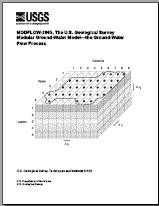
Product Details
- Product Number
- 524911
- Series
- TM-04-B05
- Scale
- NO SCALE
- Alternate ID
- TM-04-B05
- ISBN
- 978-1-4113-4223-1
- Authors
- WILBERT O THOMAS JR
- Version Date
- 01/01/2018
- Countries
- USA
- Media
- Paper
- Format
- Bound
Additional Details
- Description
-
Abstract
Accurate estimates of flood frequency and magnitude are a key component of any effective nationwide flood risk management and flood damage abatement program. In addition to accuracy, methods for estimating flood risk must be uniformly and consistently applied because management of the Nation’s water and related land resources is a collaborative effort involving multiple actors including most levels of government and the private sector.
Flood frequency guidelines have been published in the United States since 1967, and have undergone periodic revisions. In 1967, the U.S. Water Resources Council presented a coherent approach to flood frequency with Bulletin 15, “A Uniform Technique for Determining Flood Flow Frequencies.” The method it recommended involved fitting the log-Pearson Type III distribution to annual peak flow data by the method of moments.
The first extension and update of Bulletin 15 was published in 1976 as Bulletin 17, “Guidelines for Determining Flood Flow Frequency” (Guidelines). It extended the Bulletin 15 procedures by introducing methods for dealing with outliers, historical flood information, and regional skew. Bulletin 17A was published the following year to clarify the computation of weighted skew. The next revision of the Bulletin, the Bulletin 17B, provided a host of improvements and new techniques designed to address situations that often arise in practice, including better methods for estimating and using regional skew, weighting station and regional skew, detection of outliers, and use of the conditional probability adjustment.
The current version of these Guidelines are presented in this document, denoted Bulletin 17C. It incorporates changes motivated by four of the items listed as “Future Work” in Bulletin 17B and 30 years of post-17B research on flood processes and statistical methods. The updates include: adoption of a generalized representation of flood data that allows for interval and censored data types; a new method, called the Expected Moments Algorithm, which extends the method of moments so that it can accommodate interval data; a generalized approach to identification of low outliers in flood data; and an improved method for computing confidence intervals.
Federal agencies are requested to use these Guidelines in all planning activities involving water and related land resources. State, local, and private organizations are encouraged to use these Guidelines to assure uniformity in the flood frequency estimates that all agencies concerned with flood risk should use for Federal planning decisions.
This revision is adopted with the knowledge and understanding that review of these procedures will be ongoing. Updated methods will be adopted when warranted by experience and by examination and testing of new techniques.
- Survey Date
- 2018
- Print Date
- 2018
- Height In Inches
- 11.000
- Length In Inches
- 8.500
- Two Sided
- Yes
- Pieces
- 1



